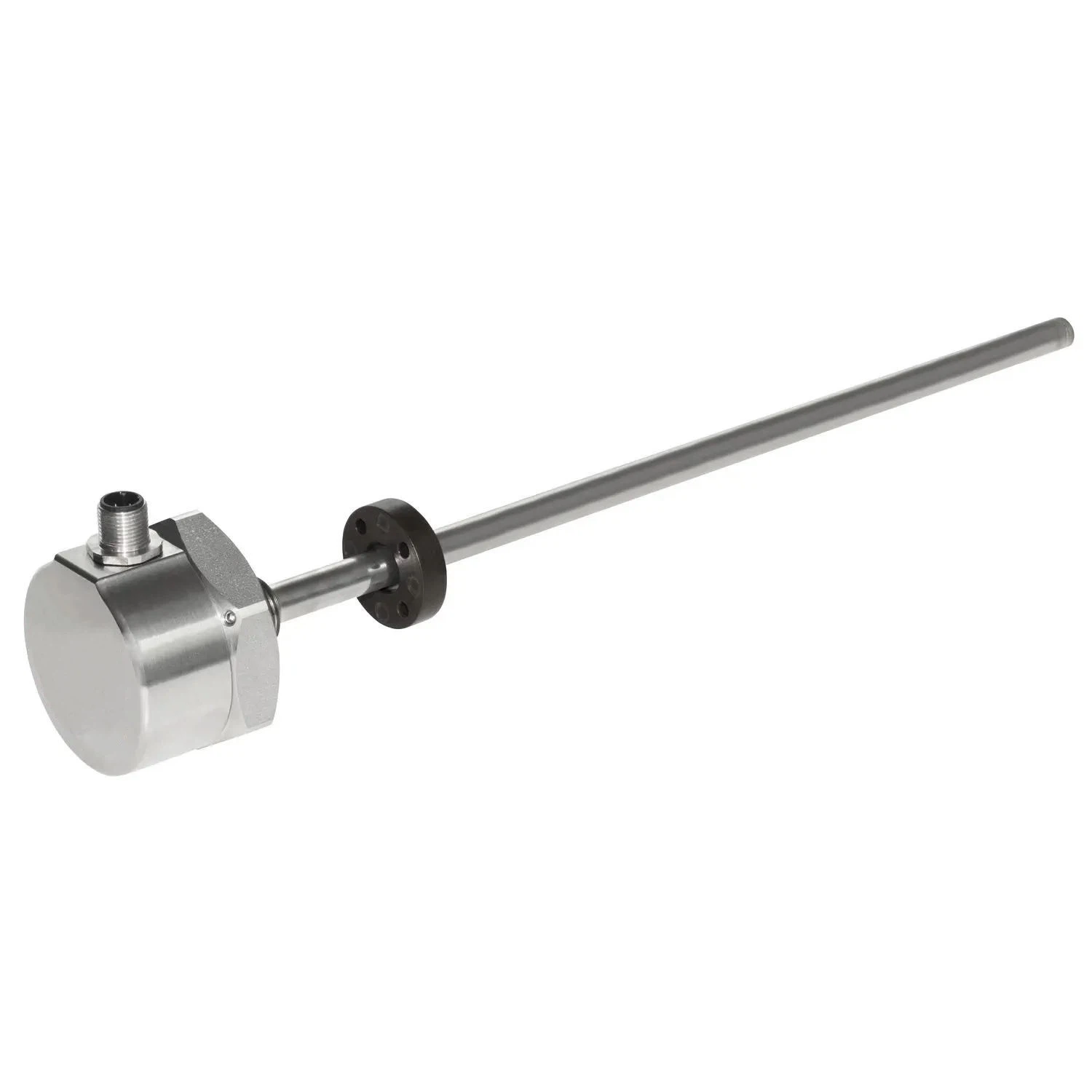

A non-contact linear magnetostrictive position sensor is a specialized device used to measure linear displacement or position without physical contact with the object being measured. These sensors utilize the magnetostrictive effect to accurately determine position by measuring the time it takes for a stress wave to travel along a waveguide. They are commonly used in industrial applications where precision and durability are essential. Here's an overview of how non-contact linear magnetostrictive position sensors work and their key features: .
Waveguide and Magnetic Interaction: Similar to traditional magnetostrictive sensors, a non-contact linear magnetostrictive position sensor consists of a waveguide made of a magnetostrictive material, such as nickel or iron. A current-carrying wire is embedded along the length of the waveguide.
Magnet and Interrogation Magnet: Instead of a magnet attached to the object being measured, a separate "interrogation magnet" is placed outside the waveguide. The interrogation magnet creates a magnetic field that interacts with the magnetostrictive material.
Magnetostrictive Effect and Stress Wave Propagation: When an electrical current flows through the wire, it generates a magnetic field around the wire. This magnetic field interacts with the interrogation magnet's field, causing the magnetostrictive material to change shape due to the magnetostrictive effect. This change in shape generates a stress wave that travels along the waveguide.
Non-Contact Operation: These sensors operate without physical contact with the object being measured, reducing wear and tear and minimizing the risk of measurement disruption.
High Accuracy: Non-contact linear magnetostrictive sensors offer high accuracy and resolution in measuring linear displacement.
Real-Time Monitoring: These sensors provide real-time position feedback, enabling precise control and monitoring.


Industrial automation: Measuring the position of moving parts, actuation mechanisms, and equipment.
Material handling: Position sensing in conveyors, lifts, and robotic systems.
Liquid level measurement: Monitoring liquid levels in tanks, vessels, and containers.
Process control: Accurate control of valves, actuators, and other components.
Automotive: Position measurement in automotive systems and components.
